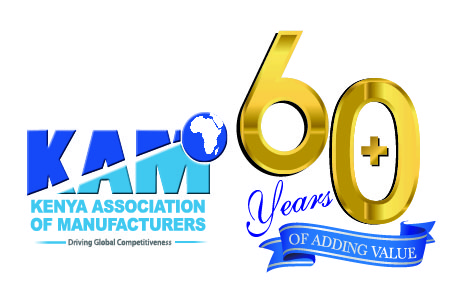How does Kenya Fair in the Global Market?
By Mucai Kunyiha,
If you start a business growing vegetables on your farm and take them to the market, you soon come to realise that there are other farmers both in close proximity to you and far away who are targeting the same market with their vegetables. The quantity, quality and size of the vegetables will determine the market prices and you will have to start figuring out what you need to grow to continue successfully in the market. The ability to do this in a sustained and successful manner is what is referred to as competitiveness.
Just as a vegetable farmer, Kenyan manufacturing participates in a global marketplace, competing against local, regional and global manufacturers. In manufacturing terms, a country’s industrial competitiveness has been defined as ‘the degree to which a nation can, under the free trade and fair market conditions, produce goods and services that meet the test of international markets, whilst, simultaneously maintaining and expanding the real income of its citizens’. The United Nations Industrial Development Organisation (UNIDO) launched the Competitive Industrial Performance (CIP) Index 2020 in Kenya in partnership with Kenya Association of Manufacturers (KAM); Its findings on Kenya’s competitiveness are grim – ranking 115 out of 152 countries.
Why do these global indices matter, one might ask? Firstly, it allows us to identify our comparator and competitor countries. The ranking of China (2), India (42), South Africa (52) and Egypt (64) is part of the explanation for the stiff competition they provide to Kenyan-made goods in the local and regional markets.
Whereas Kenya was slightly ahead of its East African partners – Tanzania (123) and Uganda (128), when benchmarked against other countries within the ‘other developing countries’ category, we find that Sub-Saharan countries rank ahead of Kenya, for instance, Eswatini (formerly Swaziland) (83), Botswana (89), Namibia (97) and Congo (101) amongst others. Ranking comes with a good dose of humble pie.
Secondly, and I would say most importantly, the index points at the key areas countries need to focus on to progress their manufacturing agenda. Different countries can pick their own strategies that are fitting and appropriate from their current starting point, to fit the resources and opportunities at their disposal. Herein lies Kenya’s opportunity.
The CIP Index covers three main dimensions – the capacity to produce and export manufactured goods, technological deepening and upgrading, and world impact.
The capacity to manufacture and export refers to our ability and record in actual value-added production. If we continue with the vegetable illustration, we could ask how many types of vegetables you grow, the quantity and quality produced per hectare. Further value addition would include packaging into sacks for delivery to a wholesale market, or perhaps you could pack into trays for supermarket shelves.
Increased value addition also allows you to access new and more sophisticated markets and obtain better prices. Unwashed vegetables may be sufficient for the local kiosk but not a supermarket shelf, chilled vegetables can allow you to access the Mombasa market where prices may be higher, and tomato paste can be delivered to the Middle East.
You get the point – value can be added to the basic commodity, and the more value you add, the higher the price, and arguably the less volatile the pricing – the price of a salad in your favourite restaurant does not change with the market prices of the vegetables. Kenya scores poorly on manufacturing value added per capita, ranking 131 in the world, indicating that we do relatively little value addition in our country
The CIP Index also looks at our ability to move into high value addition and inculcate technology into various sectors of industry, improving the quality and positioning of our output on a global stage. Technology and its application is a crucial cog in value addition. Low levels of value addition are possible with manual labour, but creating more technologically advanced goods requires skills, equipment and know-how. The growth and expansion of manufacturing technology is one of the means by which manufacturing creates a multiplier effect in the knowledge and skills base of a country.
Kenya’s performance on the technology front was very low with 78% of manufacturing being resource-based or low technology. Medium technology manufacturing was 16% and high technology manufacturing only 5% of overall manufacturing. Here, the vegetable analogy begins to breakdown – whatever you do to the vegetables, would still be in the resource-based category. Moving to medium technology would be manufacturing the equipment and machinery for the various processes e.g. tractor parts, sorting and packing machines. High technology manufacturing would include RFID systems to track and trace, laboratory equipment to analyse the vegetables for nutrients etc.
The UNIDO report signals that we have a lot to do in our journey to grow as a manufacturing nation. It also gives us some suggestions on the key areas we could focus on to move the needle. If we are thoughtful, persistent and consistent in our manufacturing strategy, we can progress.
The writer is the Chairman of Kenya Association of Manufacturers and can be reached on info@kam.co.ke.
Looking for elevation? KAM lifts you up.
- Direct technical assistance
- Capacity building programmes
- Networking and mentorship
- Industry insights & analysis
- Trade & export development services
